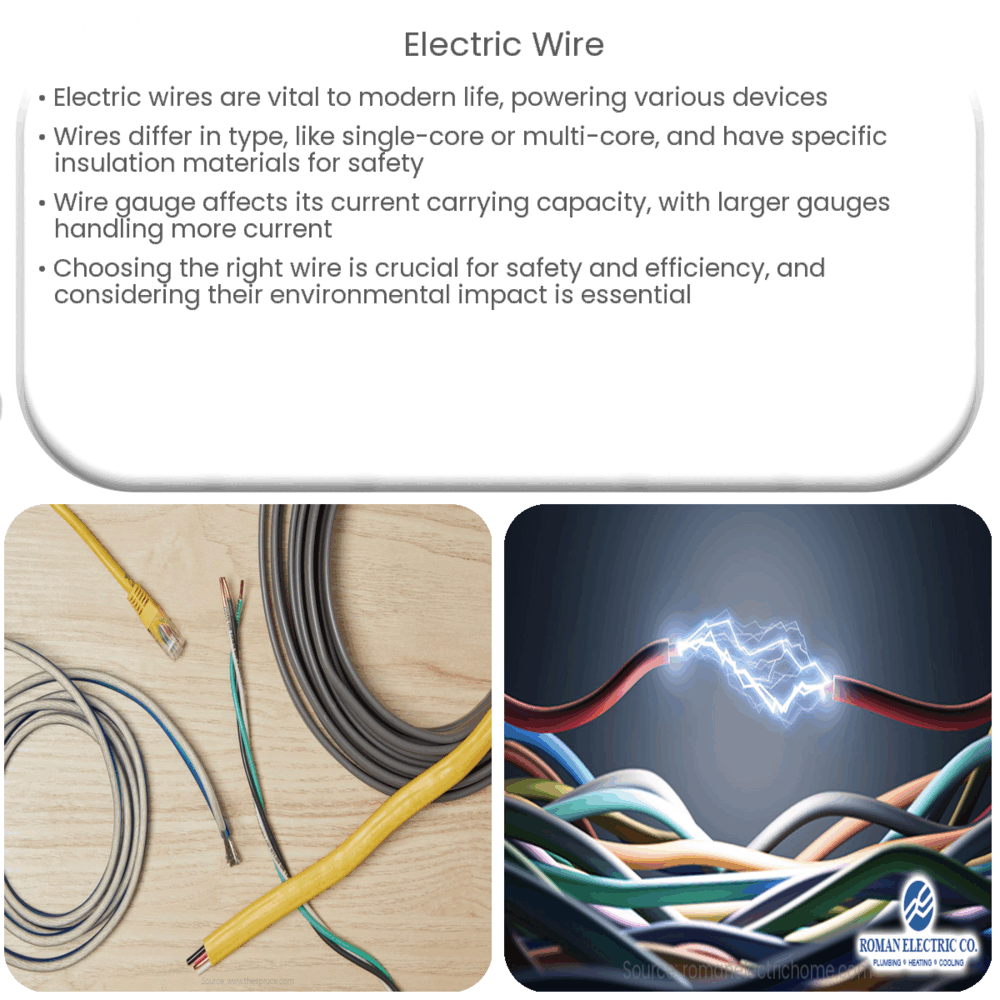Explore the world of electric wires, their types, uses, and impact on the environment in our comprehensive guide to understanding electrical wiring.

Introduction to Electric Wire
Electric wires are essential components of our daily life, forming the backbone of our modern electric infrastructure. Without these components, we wouldn’t be able to light up our homes, use our computers, or even charge our mobile devices.
What are Electric Wires?
At its most basic, an electric wire is a conductor that facilitates the movement of electric current from one place to another. It typically comprises a metal core, usually copper or aluminum, due to their high conductivity, and an insulating layer to protect the user and the environment from the electric current.
Types of Electric Wires
- Single-core wires: These types of wires have a single metal core. They’re often used for homes and low power appliances.
- Multi-core wires: In contrast, multi-core wires contain more than one metal core. They are utilized in high power appliances and systems where flexibility is essential.
- Stranded wires: These wires consist of multiple small wires bundled or wrapped together. They’re flexible, making them suitable for use in electronic devices and applications where movement is required.
- Solid wires: These wires use a single piece of metal wire as the conductor. Solid wires are stiffer and more durable, making them suitable for installations where the wire won’t be moved frequently, like in building wiring.
The Role of Insulation in Electric Wires
Every wire is surrounded by a layer of insulation that prevents the current from escaping the wire and safeguards users from potential electrical shocks. Insulation materials vary depending on the intended use of the wire, with common materials being plastic, rubber, and TeflonTM.
Wire Gauge and Current Capacity
The diameter or thickness of a wire, known as its gauge, directly affects its current carrying capacity. The larger the gauge, the more current it can handle safely. In wire gauges, an inverse relationship exists: a wire labeled ’10-gauge’ will be thicker and able to carry more current than a ’20-gauge’ wire.
Understanding Wire Colors
The color of a wire’s insulation often signifies its purpose in an electrical system. Here are common color codes in electric wiring:
- Black wires: Typically indicate power or “hot” wires that carry current from the power source to the device.
- Red wires: Generally serve as secondary live wires in certain types of wiring, or for purposes such as switch legs or connecting hardwired smoke detectors.
- White or gray wires: Usually signify neutral wires that carry current back to the power source.
- Green or bare copper wires: Are commonly used as ground wires, providing a pathway for residual current to travel safely back to the ground.
Considerations when Choosing Electric Wires
When choosing electric wires, there are several factors to consider. These include the intended use, the amount of current it needs to handle, the environment in which it will be used, and the local and international safety and quality standards it must comply with. Ensuring the right type of wire for a specific application is critical for safety and efficiency.
The Impact of Electric Wires on the Environment
While electric wires have made modern life possible, they also have an environmental impact. They can contribute to electronic waste when disposed of improperly. Many wires are recyclable, and efforts should be made to recycle or responsibly dispose of used or obsolete wires. Additionally, using energy-efficient wires can help reduce energy consumption and the carbon footprint.
Conclusion
In summary, electric wires are indispensable elements of our electrical systems, powering our devices and appliances. They come in a variety of types, gauges, and colors, each suited to specific applications. It’s essential to understand the role, functionality, and environmental impact of these wires to make informed choices, whether for home wiring, industrial applications, or electronic devices. The use and disposal of electric wires should always prioritize safety, efficiency, and sustainability.

